
The real stars of the craft brewing industry are the ingredients. Craft enthusiasts grab the latest offering from their favorite brewery or a newcomer off the shelf and immediately check the label. What’s in this? What’s special about it? Invariably they’ll get some facts or maybe some prose about the hops and malts used to create that batch.
But what about the yeast? OK, so probably no one is buying their beer based off the mathematics of your yeast pitching, but behind the scenes, nailing the yeast pitch will make sure your marketing descriptions match the actual flavors of your final product in every batch.
So, let’s make sure we nail that yeast pitch, shall we? Better yet, let’s try and do it while kicking our feet up and letting a machine do the dirty work.
Yeast pitching basics
Before we kick our feet up, let’s review the basics and the impact yeast and pitch rate have on beer. For the basics, we turn to the great book “Yeast — the practical guide to beer fermentation” by Chris White and Jamil Zainasheff. They recommend:
- For ales, cells to pitch = (0.75 million) x (ml of wort) x (degrees Plato of the wort)
- For lagers, cells to pitch = (1.5 million) x (ml of wort) x (degrees Plato of the wort)
- British style ales and German style Weizen might require 0.5-0.75 million in the formula above.
Miss these marks at your own peril.
“It is important to emphasize the importance of pitching rate to overall fermentation performance and beer analysis,” said Chris Boulton, a professor with the University of Nottingham and author of Brewing Yeast and Fermentation. “Precise regulation of this parameter is key to ensuring consistent performance both in terms of fermentation cycle times but also with regard to yeast growth extent and the related efficiency of conversion of extract into ethanol and the formation of yeast-derived beer flavor components.”
According to Wyeast Laboratories Inc., here are the specific issues tied to over- or under-pitching.
A low pitch rate can lead to:
- Excess levels of diacetyl
- Increase in higher/fusel alcohol formation
- Increase in ester formation
- Increase in volatile sulfur compounds
- High terminal gravities
- Stuck fermentations
- Increased risk of infection
High pitch rates can lead to:
- Very low ester production
- Very fast fermentations
- Thin or lacking body/mouthfeel
- Autolysis (Yeasty flavors due to lysing of cells)
Both scenarios can lead to high wastage, poor yeast management and increased batch-to-batch variation. John Carvell, sales and marketing director with Aber Instruments, noted that larger brewers tend to set very tight tolerances on yeast pitching rates and these have to be +/- 10 percent of the target rate. So, if the pitching rate was 20 million cells/ml it has to be 18 to 22 million cells/ml to be within target.
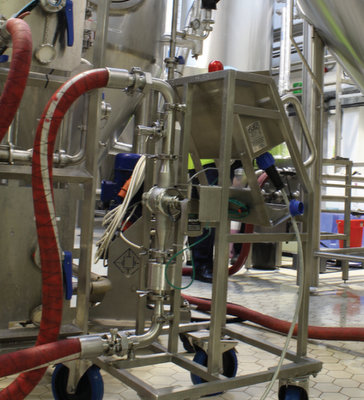
Automation has an answer
Knowing the science and executing it within the brewing process are two different things, and even the most diligent craft brewer might over or underestimate their yeast cell count because of the unpredictability of things at the microest of micro levels. Not all yeast cells are viable, so specing out how much yeast should be added, based solely on know-how and formula tables, will not produce a consistently accurate outcome.
This is where the machines come into play. You, professional brewer, can’t predict how much of the yeast is viable, or inspect it at a micro level, but the right technology can.
“The key here is repeatability,” Boulton said. “Conventional control of pitching rate is based on analysis of pitching yeast slurries. This can be via measurement of spun solids or based on cell counts. Preferably there will also be a correction for viability, typically based on the use of a haemocytometer counting chamber staining containing yeast cells stained with methylene blue. This correction is not always carried out. Both of the methods of yeast slurry analysis are subject to significant errors because of the inherent difficulty of counting large numbers of cells and because of the presence of variable amounts of non-yeast solids.
“Previous work, in which the performance of a number of analysts working with replicate samples of slurries has been compared, suggested that in absolute terms the precision of manual counting methods is no better than +/- 20 percent,” Boulton continued.
With technology like Aber Instruments PerfectPitch, a mobile pitching skid that can probe and factor in the on-line live yeast cell count, the error rate is reduced to around +/- 2 percent to 5 percent.
“The presence of variable amounts of trub in pitching yeast slurries means that under-pitching is the most likely error. This is a cause for concern but is probably out-weighed by the poor repeatability of manual analyses. The errors are not related to recipe,” Boulton said.
The PerfectPitch skid is comprised of the Aber Compact probe, a flow meter and a V350 monitor that serves as a mini PLC. The PLC on the skid calculates the total number of live yeast cells being transferred over. This figure is calculated from the combination of the live cell concentration (cells/ml) and the flow rate of the yeast slurry. The compact and the flow meter communicate with the V350 to ensure the correct concentration of live yeast has been pitched. A beacon on the PerfectPitch comes on when the pre-set target concentration is reached, which can be used as an indicator to switch off the pump.
Breweries that employ cone-to-cone pitching will really benefit from this approach as taking a representative sample from the bottom of the yeast cone is impossible due the heterogeneous nature of the yeast slurry at the bottom of the cone.
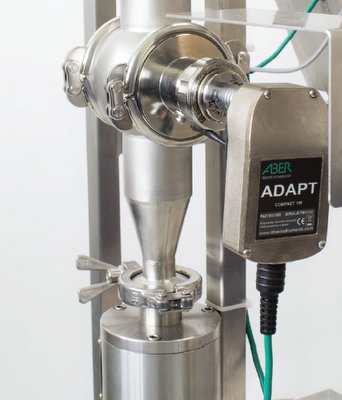
Benefits beyond beer
So, accurately analyzing cells in real time helps protect brews from all potential off-flavors and issues mentioned earlier, which allows a better product to hit the market, satisfying old customers and winning over news ones. Hooray! But wait, there is more.
Consistently producing quality beer, while reducing waste, is a no-brainer for cost-savings.
“Quantitative cost-savings can be couched in terms of poor vessel utilization such that variable cycle times result in an inability to forward plan with accuracy and therefore more vessels are required to meet production demands,” Boulton said. “The additional vessels attract both capex and opex costs.”
A U.S.-based craft brewer reported in 2012 and 2013 that it was throwing away approximately up to 1,700 bbl of beer per year due to underpitching. So, estimate how much money one barrel of your production costs you, and then consider that loss. This brewer calculated that it was losing potentially $30,000 per year. The costs for beer production with smaller breweries is likely to be higher.
For those interested in eliminating this concern from their production and are specifically interested in the PerfectPitch, the product fits craft breweries with an output of 20,000 bbls per year and upward.

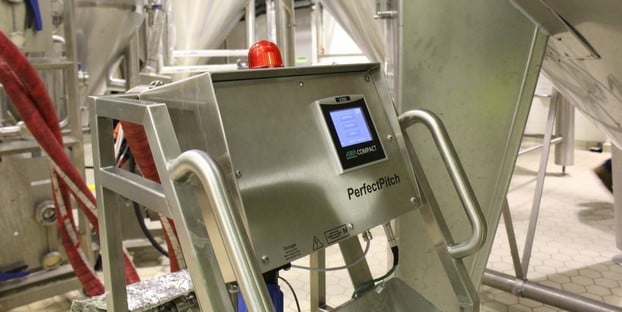
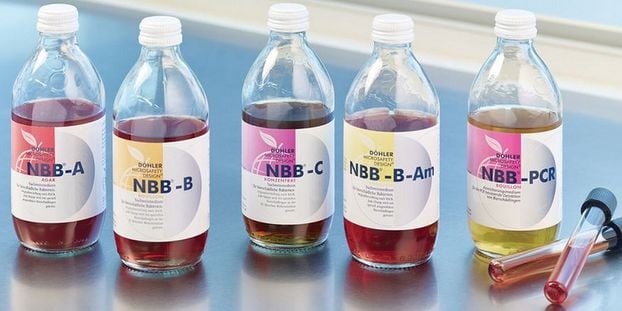

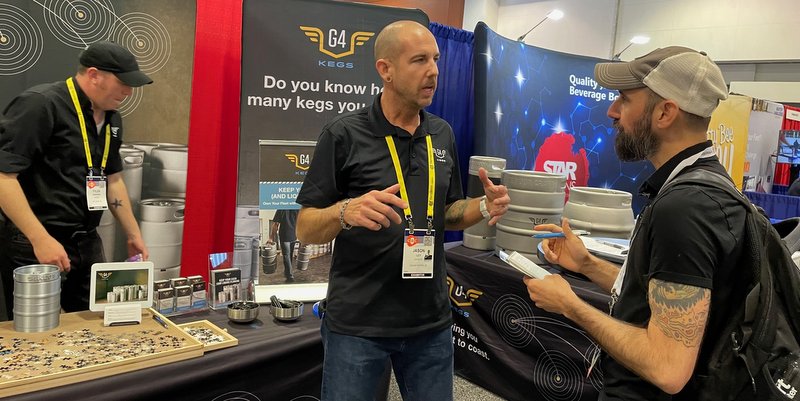
What do you think about automatic #yeast pitching rate control? http://t.co/xWSzWpKydS #sundayreading” MT @CraftBrewingBiz #Beer #QA #QC
RT @CraftBrewingBiz: How automatic yeast pitching rate control can improve your beer quality http://t.co/uWBZOXNgyn #sundayreading
How can automatic yeast pitching rate control improve #beer quality? Find out in this @craftbrewingbiz article: http://t.co/EAkxPUZE8V
Improve your yeast pitch with automation http://t.co/6nLqY67iPi via @craftbrewingbiz
“How automatic yeast pitching rate control can improve your beer quality” http://t.co/FOCH450Qzb
Brewery Insurance Program liked this on Facebook.
How automatic yeast pitching rate control can improve your beer quality
http://t.co/pLhC5hBqnZ #BeerGeekTweet
http://t.co/xKDZxe1p3F
@SierraNevada
Improve your yeast pitch with automation http://t.co/xKDZxe1p3F
#craftbeer #craftbrewing #brewing
Scott Grinstead liked this on Facebook.
RT @crsimp01: Improve your yeast pitch with automation http://t.co/foKgzZFmfZ via @craftbrewingbiz
Jared Read liked this on Facebook.
Improve your yeast pitch with automation http://t.co/foKgzZFmfZ via @craftbrewingbiz